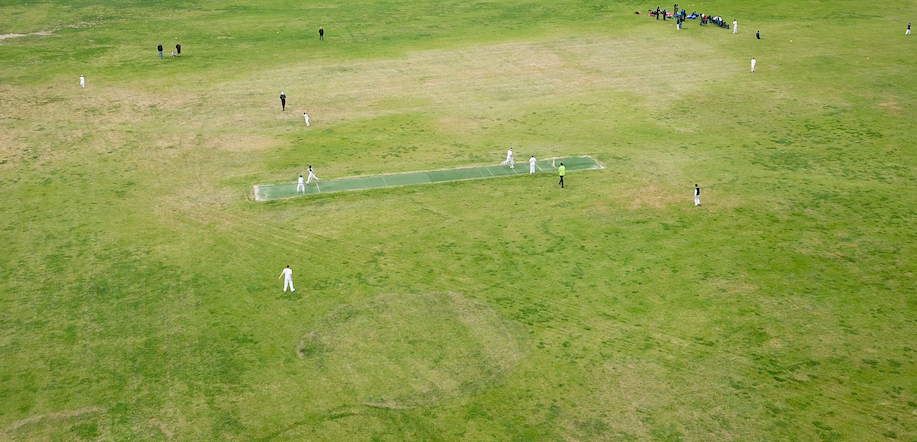We’ve all heard it before, runs are currency. Runs get you picked, score more runs and you will play higher.
The most frustrating aspect of this though is the fact that many players feel like they are hitting the ball really well and then all of a sudden they go out and get that dreaded “start”.
You know what I’m talking about, the 20’s or 30’s. Feeling great and then all of a sudden, boom! Wicket and you're out for another score in the mid 20’s.
This is a common occurrence that I hear on the daily, not just in junior cricket but a lot in senior cricket too. Tying to shake it can become the hardest part of a batters game.
When a player comes to me with this issue, the first thing I say is that it’s not always a technical flaw.
Many player's look at their technical side to find the error which is normal, but in my time as a player and now coach, there are many other contributing factors as to why you have yet again not turned your start into something bigger.
More times than not we use the technical deficiency as the outcome, but you have to look a little further back in the chain sometimes to find out why. Why did you play that particular shot, or what brought you to make that decision which resulted in an error in skill.
Below we take a look at 5 key reasons why you might be missing out on those bigger scores....
1. Your Limited Ability to Focus Over Long Periods of Time
Some of you may have what we call, the “shiny light syndrome”. I find that many players are only capable of concentrating for a certain amount of time/balls.
After that, they are mentally fatigued and find it hard to make the right decision.
The key to this is to make sure you are using your focus and mental energy in a better way. Your ability to switch off between balls is key here so as that you are not expending so much energy when you don’t need to. Save it for when you have to hit the ball!
Think of your concentration levels as a jug of water, if there is a hole in the bottom that leaks all your concentration and focus out.
If you can plug that hole when you don’t need to expend it, it’s going to last much longer than if you let it all just flow out in one big gush for a certain amount of time. That’s basically what you are doing when most of you bat.
If you are on 100% of the time, all of the time, with so many things happening in your brain you will tend to fade much faster.
? How To Improve ?: Look to develop a between ball routine/process to ensure that you can switch off and on between balls/overs. This allows your focus to be more concise when you are looking to bat as the bowler is coming in and relieves you of the mental stress that you feel in your downtime between balls.
2. You Haven’t Developed Transition Plans for Different Game Phases
This is quite a common one that many batters don’t think they have an issue with. Some players find it tough to move into their next phase of the game.
For example, you spend a lot of time getting in, face a lot of balls and then all of a sudden the pressure to start scoring is put on yourself. You end up throwing it away to try and go big and hit a boundary to get out of your run of dot balls… Sound familiar?
You need to learn how to transition from each phase of the game so it makes scoring runs much more natural.
If you can develop plans around each stage of the game off the field (early in the innings, middle of the innings, end of the innings), you will be able to execute these much easier when you are out in the middle.
The key to this is to make sure you are able to transition clearly from getting in, to upping your strike rate (run a ball) and then when you are really seeing them well, how to capitalise on that and score greater than a run a ball.
? How To Improve ?: Sit down and identify 3 of your strengths as a batter. These 3 key strengths form the basis of your innings. Early on practice ways of being patient and only scoring in the 2 biggest strength areas. From there start to identify how you can transition and take a few more risks to up your run rate. Your boundary options are your 3 strengths, and then train ways to find singles off other balls.
3. You Have Trouble Reading Different Stages of the Game
In my opinion, this is one of the biggest factors in what leads to you losing your wicket in these scenarios.
If you have trouble identifying the stage that the game is in then your plans will not match these and you will find it builds unnecessary pressure that leads you to making critical errors at important times.
This takes time to learn and making errors and reviewing them afterwards is the traditional way for most people to develop a greater understanding of this.
However, we don’t have that much time! I don’t want the light bulb to turn on all of a sudden when you are 23 and played over 100 senior games. There is a way to fast track this.
We use a little framework called the traffic lights. Red light (defend) , yellow light (contain), Green Light (Attack).
Your game plan (Reason No.2) should be dictated partly by what stage of the game you are in. If you read this wrong then you find that your batting methods can be a catalyst to losing your wicket at the wrong time.
Example - you're 14 off 50, you start to panic because you’ve been bogged down and need to score quick runs now because you are under 50% strike rate. The pressure is on for quick boundaries to make up for all the dot balls you've taken. See how it can escalate so quickly?
In that situation being 14 off 50 isn’t the end of the world, it's actually a great platform! But instead of going from Red Light to Green Light and being ultra attacking, maybe let's look at ways we can slowly build up your strike rate and look to be a little more busy at the crease?
That middle phase is called the Yellow Light; building that solid base and then progressing into slightly more attacking mentality, while still having an understanding that you need to contain and not lose your wicket.
Low risk, high reward shots are key in this stage and it helps you create a slightly more attacking mindset while not throwing the kitchen sink at everything.
? How To Improve ?: Spend time at training batting in these different situations. Put a runs and balls value on them e.g. First 7 minutes no wickets lost for Red Light, Yellow Light might be 10 off 12, with the Green Light being 14 off 12. Have fields set out so you can see where you can score as this brings Reason No.2 into the equation (making sure you have a set plan in place).
4. You Aren't Fit Enough
Some cricketers take fitness for granted. Put simply, being physically fitter will mean you tire less quickly.
How does that affect your batting? Well easy…
The fitter you are the less tired you become over a longer period, which means that your brain also doesn’t become fatigued as quickly.
If your brain isn’t fatigued you have more clarity in decision making and judgement. If you have better clarity and judgement you won’t play that rash shot or chase a wider ball and knick it like you may do if you are starting to feel the signs of mental and physical fatigue.
As I said, many people underestimate this but cricket is a tough game played in the summer in harsh conditions. If you can meet the physical demands of this, it becomes much easier to bat for long periods of time.
? How To Improve ?: Look to invest in a strength and conditioning coach. Learn how interval training can influence your performance and incorporate this into your batting training. Rather than just standing at the striker's end and lacing balls into the net, actually have intent and run between the wickets. After 10 minutes you will work up your heart rate and find that these areas of your game are more tested because you are having to use them at training now.
5. You Haven’t Batted for Long Enough
One aspect that many don’t think about is that you may not have batted for an extended amount of time before.
If you expect to score 50’s and 100’s you will have to face 100 - 200 balls. If you’ve not scored that amount of runs before then you actually don’t really know what to do and how it feels facing those amounts of balls in one go.
If you only bat for 10 minutes in a net a week, you probably will find it hard to face more than 30 balls consistently on a weekend.
In order to get better at batting for long periods of time, you have to do it more often outside of a game.
10 minutes of nets mean facing maybe 30 balls. If you want those big scores and bat for long periods of time, you have to eventually learn to do that at training as well.
Don’t be happy with just one hit at training for the week. Learn to bat for long periods of time and what comes with that as well. Learn that after batting for 10 minutes your mind starts to wander and you get a little hot and dehydrated. This is where it's good practice to start constructing your innings and use all the tips we've been over in this article.
The reason why you get out in the 20’s is likely because you haven’t trained to bat any longer than 30 or 40 balls.
? How To Improve ?: Bat, bat, and bat some more! Sometimes you might want to find someone to go down the nets with and create an innings. What I mean is actually go down and face 70 balls in a game style situation. Learn to build your innings and bat for long periods of time with the game situations in mind by setting fields etc. If you are out, start again and only take drinks after facing an hour of balls. All of that will help you learn and put into practice all of the 4 reasons before this one.
Naturally, you can’t do this at training every week but even just having a hit outside of your allocated net during training will help.
Hit balls with a purpose if you aren’t a bowler, get to training early and work with a mate. All of these things can help you become better at this.
Final Thoughts
As you can see, the issue that players have when they say they are getting starts but not going on with it can come from many different areas of their game.
The question you need to ask yourself is which of these areas is most likely your downfall?
If you can answer that straight away that’s great! If you can’t that's okay as well. It may take time to tinker with a host of these different areas to make sure that you turn that start into a big score!
The biggest takeaway message here, however, is that scoring big scores takes effort and you cannot just expect them to happen. Work hard and be diligent in your preparation and the rest will take care of itself!
Good Luck!
Author: Joel Hamilton - ACI Co-Founder and Head Coach






